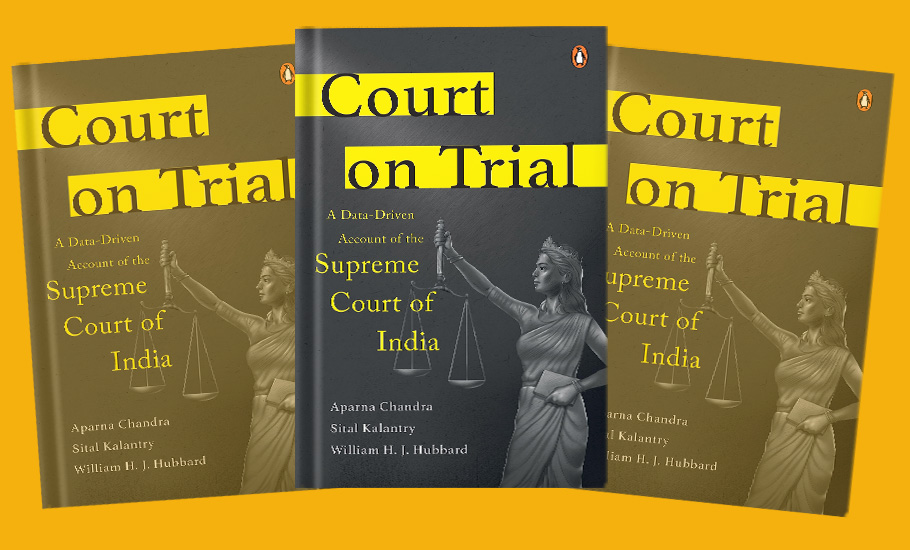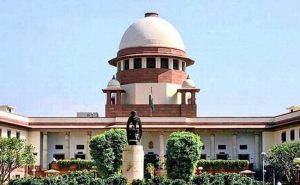
Court On Trial review: How to overhaul Supreme Court for more transparency, efficiency

At a time when various institutions in India have come under unprecedented pressure from the Modi government, and some have clearly succumbed, the Supreme Court stands out in sharp, if not in perennially shining, contrast. The apex court, reputedly the world’s most powerful, has had its share of blemishes even in these heroic times, exemplified by how Ranjan Gogoi accepted a government nomination to the Rajya Sabha within four months of retiring as the Chief Justice of India.
Yet, Court on Trial: A Data-Driven Account of the Supreme Court of India (Penguin), a path-breaking book on the country’s highest judicial seat by Aparna Chandra, Sital Kalantry and William HJ Hubbard, stands out because it is based not on impressions or anecdotes but uses empirical research tools to draw some disturbing conclusions.
What began as a small court of eight judges in 1950, sitting in large benches, hearing a limited number of matters, and focusing on expounding the new constitution, has now catapulted into a behemoth of 34 judges, struggling to keep up with the demand for its time. They now sit in smaller and smaller benches, hearing an ever-increasing number of matters, and are so swamped with routine appeals that they do not have the time to devote to some of the most pressing issues.
Derailed by workload
The Supreme Court is battling endemic problems and controversies. Over time, lawyers, judges, politicians and academics have offered a range of proposals to address them, underlining that things need to change. Almost every Chief Justice has started his tenure promising reforms, but the intentions have not always translated into action.
Also read: Harsh Mander: ‘State’s failures during pandemic amount to crimes against humanity’
Many problems surrounding the court are widely known, some more than the others. What the book’s authors — one an Indian (Chandra is an associate professor at the National Law School of India, Bengaluru), and and two non-Indians (while Kalantry is a professor of law and assistant dean at the Seattle University School of Law, Hubbard is a professor of law at the University of Chicago Law School), but all three committed to justice and fair play — have done is to employ analytical tools to focus on five acute problems, conduct a post-mortem of each and offer possible solutions. These relate to backlogs, the power of senior advocates, the Chief Justice’s role, lack of enough diversity in judicial appointments and pandering to the political branches.

Are critics right in alleging that since the 1990s, coinciding with India’s sweeping economic reforms, the court has turned away from its commitment to protect the interests of the marginalized and shown more favour to corporations and business interests in fundamental rights claims? While the authors concede the court’s behaviour is consistent with its vision of a people’s court as it hears the claims of individuals and gives them greater access, the sheer workload has derailed this principle.
Burgeoning pending cases
The Supreme Court grants full hearings to about 10,000 cases a year and more than a whopping 60,000 petitions annually. It hears tens of thousands of special leave petitions (SLPs) each year, with the typical admission hearing, to decide if a case can be taken up, lasting less than (believe it or not) two minutes! If cases drag on, the moneyed can afford the prolonged delays but the poor are at a clear disadvantage, derailing the purpose of the “people’s court”.
The court’s single-minded focus on maximizing access may be doing more harm than good. The authors want it to hear relatively fewer cases. It should concentrate on announcing rules for lower courts to follow to help the poor learn their rights and access the lower courts. The thousands of opinions that neither cite legal precedent nor announce rules send unclear and at times contradictory signals to the lower courts on how to decide cases.
Some 32.5 million cases are pending across India, with one in 11 cases dragging on for over 10 years, that too at the trial court. But don’t blame just the lower judiciary. As of 2011, 17 per cent of the cases on the Supreme Court’s regular hearing docket were pending for over five years, up from 7 per cent in 2004. Many were hanging for as long as 10 years. So, there are super-fast disposals for some and long gestation periods for others. The scenario is more dismal over constitutional matters: some matters were pending for more than eight-and-a-half years on average, going up to 16.3 years for seven-judge bench matters.
Also read: How China is set to reshape global trade, assert geopolitical dominance with New Silk Routes
The burgeoning SLP cases primarily related to civil and criminal issues have crowded out writ petitions and constitutional challenges. This liberal approach to SLPs has led to a ballooning pile-up and related problems. Many SLP cases raise no question of law. In the process, the apex court often avoids difficult but more pressing cases by the simple expedient of not deciding them at all (the row between the Modi and Delhi governments took over eight years to decide!) while focusing on mundane matters. Another case hanging since 2019 relates to the controversial electoral bonds.
The Supreme Court, the authors say, should typically not admit a case on which the lower courts have been unanimous unless there are compelling reasons. Another way to reduce backlogs is to institute time limits for oral arguments during merit hearings. The government too must change its approach as it is the biggest litigant before the apex court.
The perks of favourable rulings
The book also dwells on “the unusual influence” senior advocates wield. Although they are less than one per cent of the bar, they appear in nearly 40 per cent of initial hearings for SLPs as they are seen to have a distinct advantage in getting petitions admitted. For just two-minute hearings, these advocates charge Rs 75,000 to Rs 16.5 lakh.
Those with weak cases but with a fat purse engage them because it gives them a realistic chance at admission. The court should create clear rules that allow admission only for SLPs raising important questions of law. Also, the judges’ retirement age must rise so that the current yawning gap in experience vis-a-vis senior advocates reduces.
It is argued that chief justices may be using the Master of Roster power to allocate judges to specific cases so as to influence their outcomes. One solution to address strategic assignments is to remove discretion from the Chief Justice and go for assignments through mechanisms like computerized allocation. There should also be one or more permanent Constitution benches to make it difficult for a Chief Justice to evade deciding controversial cases by simply not setting up a bench at all.
The collegium, the book underlines, is far less concerned with gender and caste diversity than with religious or regional diversity. The collegium system has not emphasized the elevation of Dalit judges to the higher echelons of judiciary. Women must be appointed to high courts at younger ages so that they too become high court chief justices at a higher rate to make a dent in the lack of gender diversity in the Supreme Court. In contrast, the lower judiciary, under government control, is more diverse.
Also read: Supreme Court: Harsh preventive detention laws need strict adherence to procedure
A new empirical study is quoted as saying that apex court judges pander to the government with an eye on government jobs after retirement. And the judges (exceptions apart) who author favourable rulings in important cases were more likely to get prestigious government jobs, which bring money and perks they are used to in service. The authors not only want the retirement age of Supreme Court judges to be raised to 70 but want them to receive the same benefits and salary after retirement to reduce the incentive to take post-retirement jobs.
Assessing the proposed reforms
Many of the issues the book deals with are talked about in legal circles. The authors state that reforms are needed to make the Supreme Court more transparent, accountable, equitable and efficient. After all, it is a court whose judgments affect over a billion people. But are all the suggestions offered here practical and useful?
India is perhaps the only democracy where the executive doesn’t play a role in appointing judges; but in these troubled times this looks like a boon, not a bane. Yes, government control over lower courts may have ensured better gender and caste diversity among judges but one is appalled by some of the rulings now coming from these courts vis-à-vis the government. If judges have to be paid a pension equivalent to their last-drawn salary, will this principle be then extended to those in the government too?
The issues raised in the book are genuine and some solutions are welcome. But not all the suggestions may be the perfect antidote to some of the court’s festering wounds. Most Indians who took democracy for granted now realize the value of an unfettered Supreme Court when the executive seems eager to stamp out all dissent.


